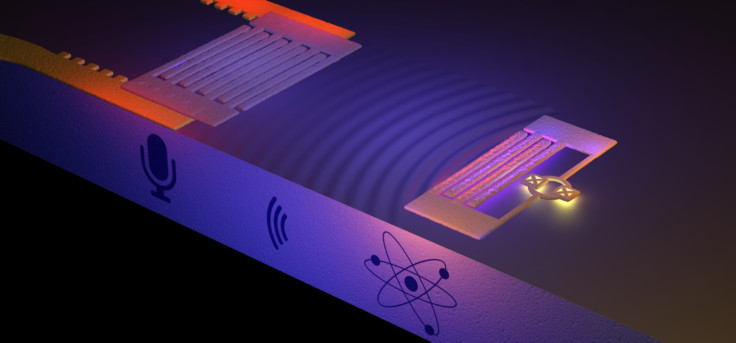Researchers Talk and Listen to an Atom Using High Frequency Sound

Researchers at Chalmers University of Technology have opened a new door into the quantum world by 'talking and listening' to an atom.
They used sound in place of light to communicate with an atom. By using an acoustic wave (instead of a light wave) to couple with an artificial atom, the atom was made to absorb and emit energy from the sound wave, reports Science2.0.
The team used a frequency of 4.8 gigahertz which is 20 octaves above the highest note on a piano. This is close to microwave frequencies used in wireless networks.
At this high frequency, the wavelength is short (both are inversely proportional) and can be guided on the surface of a microchip where the artificial atom, 0.01 millimetres long, is placed.
Natural atoms are many scales smaller and come in the range of nanometres.
The theory says the sound is divided into quantum particles. Sound becomes a stream of quantum particles constituting the weakest whisper possible.
Being slower than light, a sound particle allows better control over the phenomena.
By virtue of its smaller wavelength, the sound particle can interact with bigger atoms than what is required with light. Atoms can then be designed to couple with the sound particle to produce maximum interaction.
The researchers used a substrate of gallium arsenide (GaAs) with two important parts. One was a superconducting circuit that constitutes the artificial atom, and the other an interdigital transducer (IDT). The IDT converts electrical microwaves to sound and vice versa.
The experiments were performed at very low temperatures, near absolute zero to rule out interference from heat energy in the neighbourhood of the apparatus.
Music speaks even to the atom, apparently.
© Copyright IBTimes 2025. All rights reserved.





















